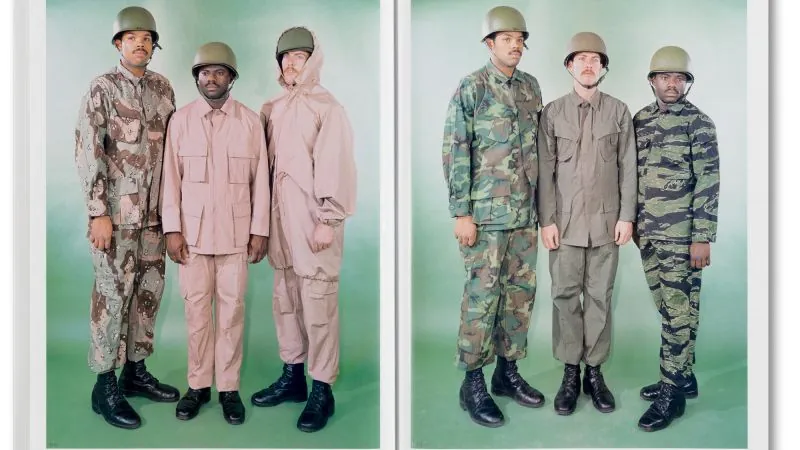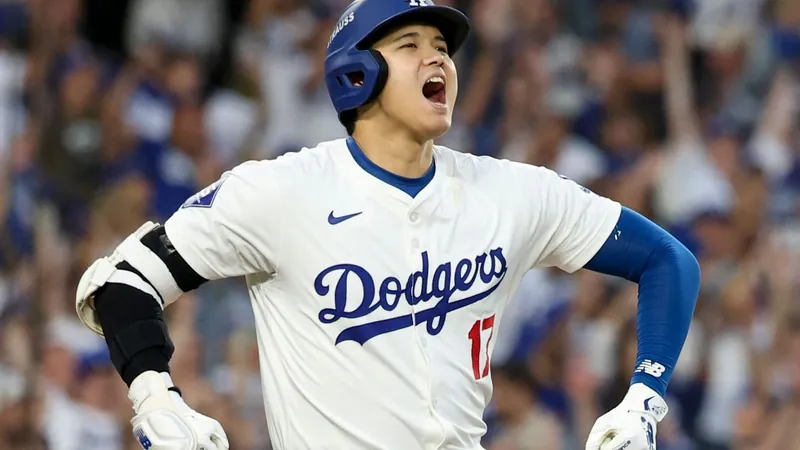
Unveiling the Unexpected: Declassified Army Photos Resembling Fashion Editorials Spark Trend Conversations
2024-10-09
Author: Wai
In a striking fusion of military history and contemporary fashion, recently declassified photographs from the U.S. Army are turning heads, resembling high-fashion editorial shoots torn from the pages of a glossy magazine. This unlikely relationship between the aesthetics of war and modern fashion reveals a deeper cultural connection as military styles continue to influence pop culture.
Matthieu Nicol, a food photography collector turned photography curator, has launched a new monograph titled "Fashion Army." This intriguing work is the result of Nicol's exploration into the evolution of military attire into fashion iconography. Following his previous release, "Better Food for Our Fighting Men," Nicol delves into the visual aesthetics that emerged from the U.S. Army's Natick Soldier Systems Center in Boston—a facility that focuses on the functionality of textiles rather than weaponry.
Nicol discovered nearly 15,000 declassified images in an online archive, from which he curated a selection of 350 compelling photographs. These images capture non-models from various military branches, styled in uniforms that echo today's fashion trends. Nicols describes this series as more than just random visual documentation; they challenge the viewer's perception of military fashion.
As fashion critic Angelo Flaccavento incisively notes in the book’s essay "Function is Form," these images ooze a glaring sense of now. The photographs, taken between the late 1970s and early 1990s—around the time of significant military engagements like the Vietnam War's closure and the onset of the Gulf War—reveal the intricate relationship between military design and civilian fashion.
"The Army is a closed society,” Nicol mentions, explaining the purpose of these images. While they were not intended for public dissemination, the photos were likely created to garner interest in military prototypes aimed at diverse Army sectors. The series captures a hint of fashion portfolio sensibility, integrating contemporary silhouettes, colors, and patterns that resonate with today’s trends.
For instance, one striking photo features a man in a vivid red fleece jacket paired with quilted trousers, reminiscent of current looks in fashion for 2024. The camouflage prints, prevalent throughout the compilation, attract attention as high-fashion houses increasingly incorporate military elements into their designs. Nicol draws parallels between the images and popular brands, noting how his daughter’s wardrobe choices reflect the influence of both high fashion and streetwear, exemplified by the current trends of Louis Vuitton under Pharrell Williams.
The book’s covers feature a man and woman donning white protective vests, harkening back to Helmut Lang's celebrated 1998 runway collections. This connection to the past showcases the cyclical nature of fashion, where military elements continuously emerge in diverse subcultures—from the countercultures of the 1960s to modern interpretations seen in indie music.
High-fashion brands like C.P. Company and Stone Island embody this relationship, paying homage to military innovations while pushing aesthetic boundaries. Nicol emphasizes that beyond their historical significance, these declassified images provoke discussions on how military styles persistently inspire civilian fashion realms.
As these previously classified documents enter the public eye, they not only highlight a fascinating intersection of history and style, but also affirm that military design has an enduring influence on contemporary fashion. With echoes of past and present resonating through these photographs, the dialogue between the worlds of military and civilian attire continues to evolve, leaving fashion enthusiasts and historians alike eager to see how this relationship will further unfold.


 Brasil (PT)
Brasil (PT)
 Canada (EN)
Canada (EN)
 Chile (ES)
Chile (ES)
 España (ES)
España (ES)
 France (FR)
France (FR)
 Hong Kong (EN)
Hong Kong (EN)
 Italia (IT)
Italia (IT)
 日本 (JA)
日本 (JA)
 Magyarország (HU)
Magyarország (HU)
 Norge (NO)
Norge (NO)
 Polska (PL)
Polska (PL)
 Schweiz (DE)
Schweiz (DE)
 Singapore (EN)
Singapore (EN)
 Sverige (SV)
Sverige (SV)
 Suomi (FI)
Suomi (FI)
 Türkiye (TR)
Türkiye (TR)